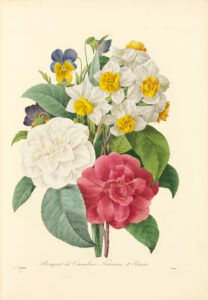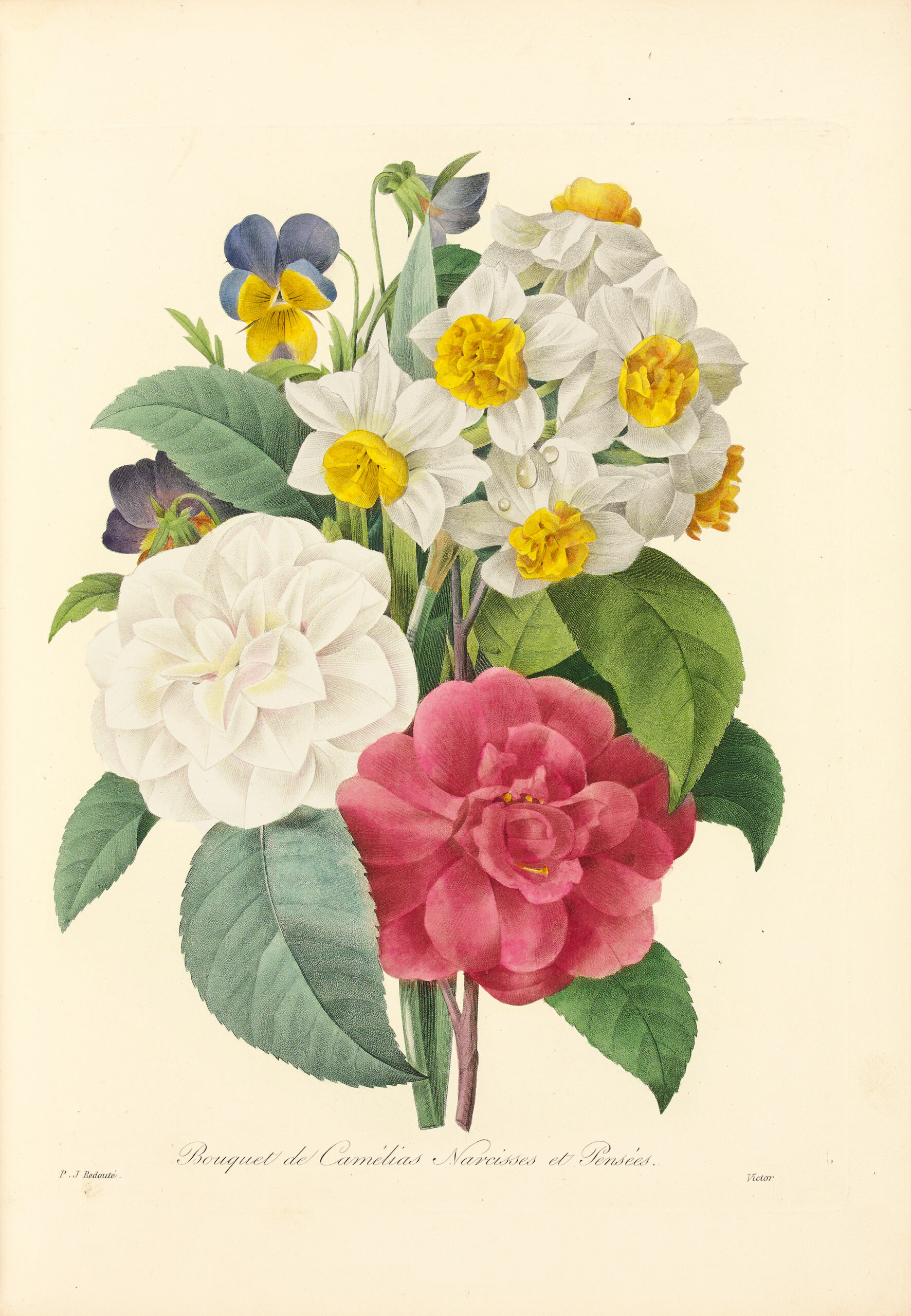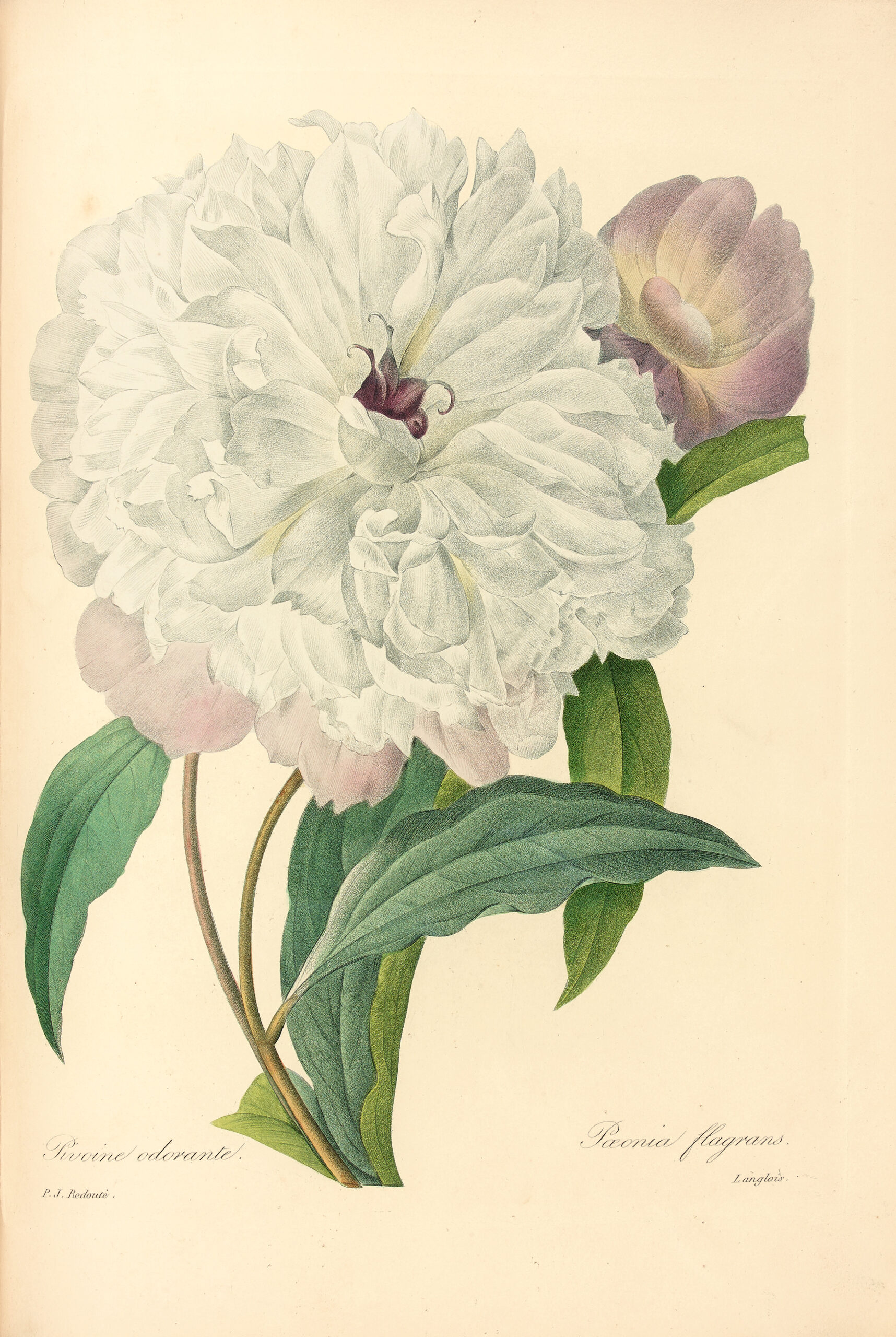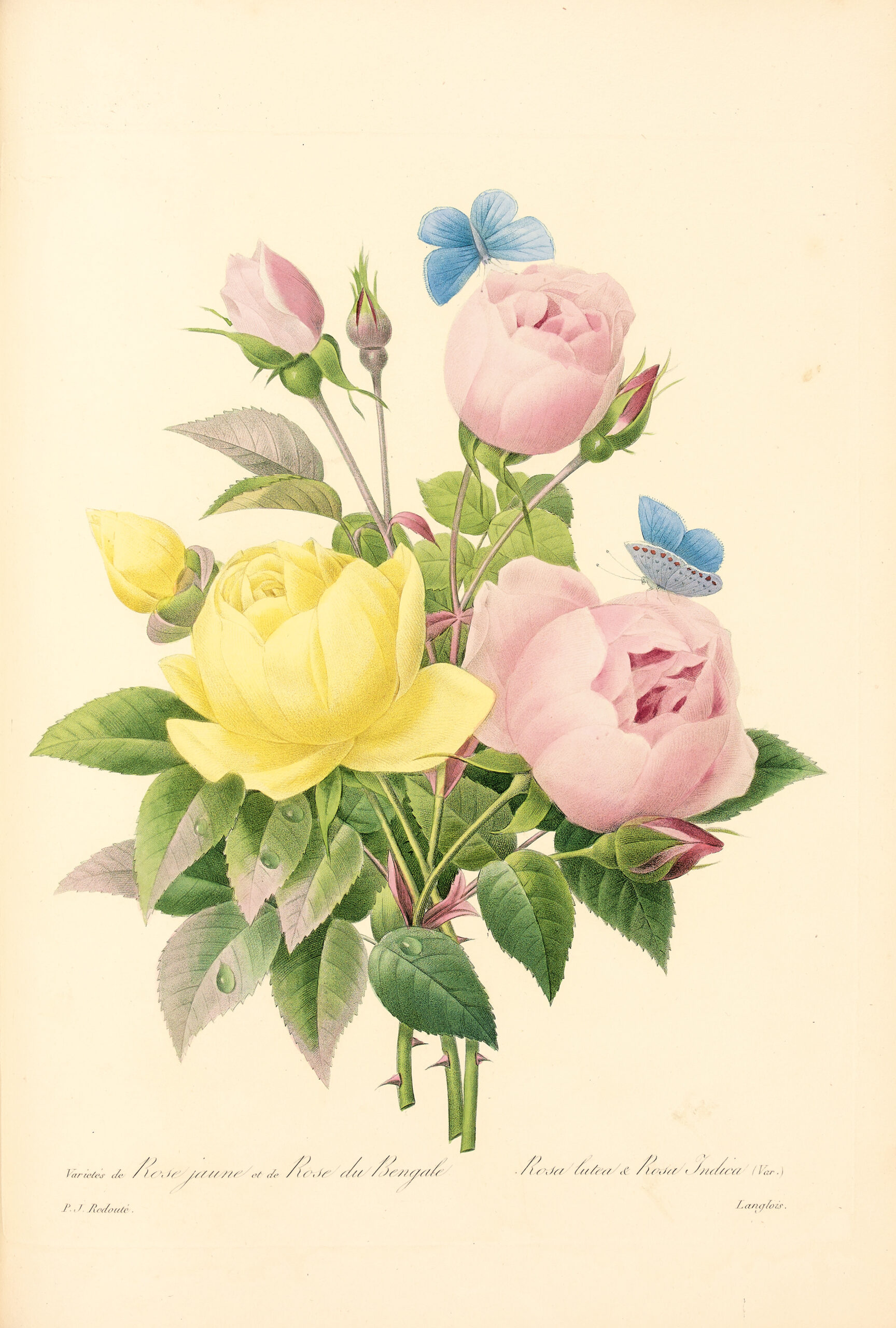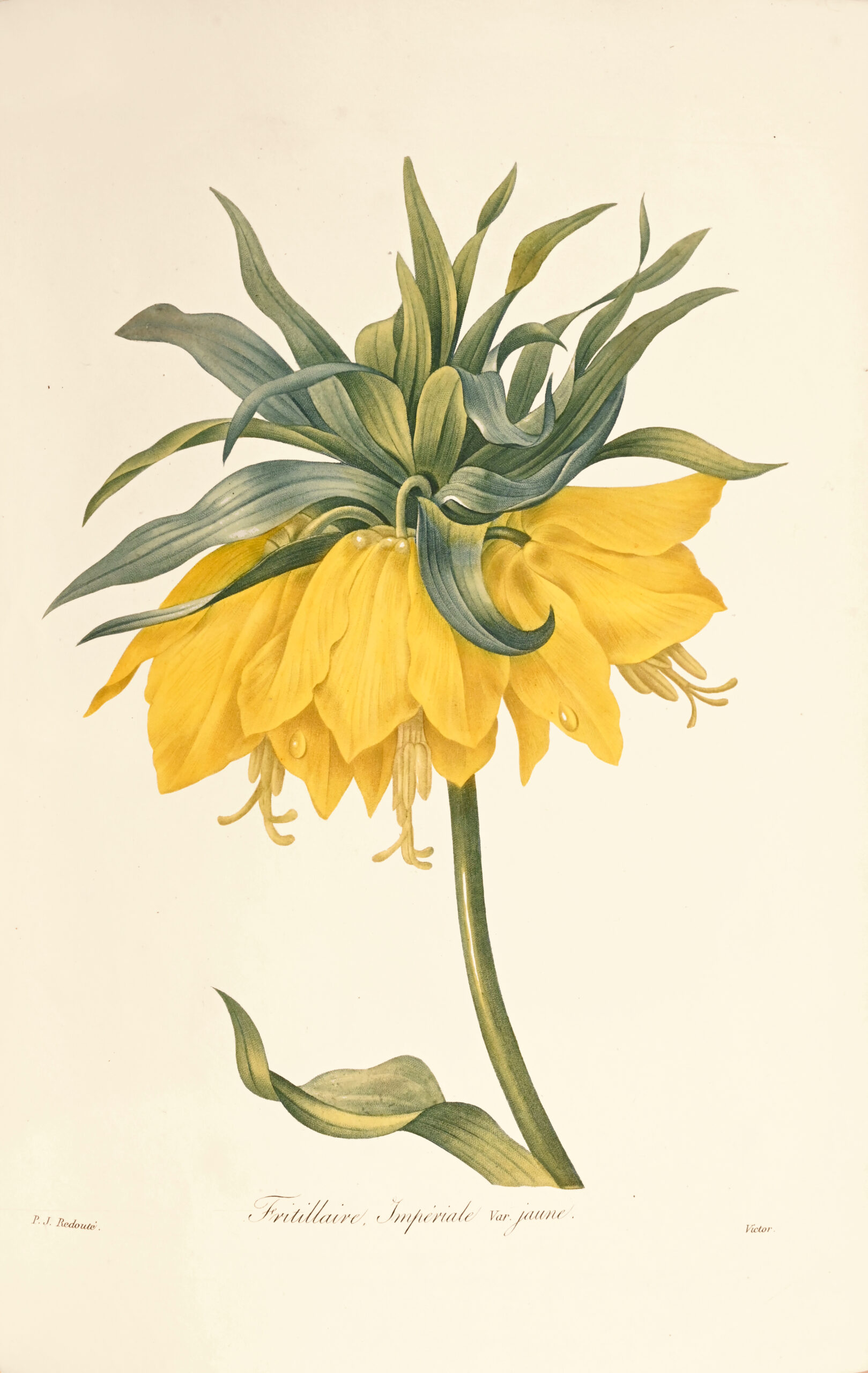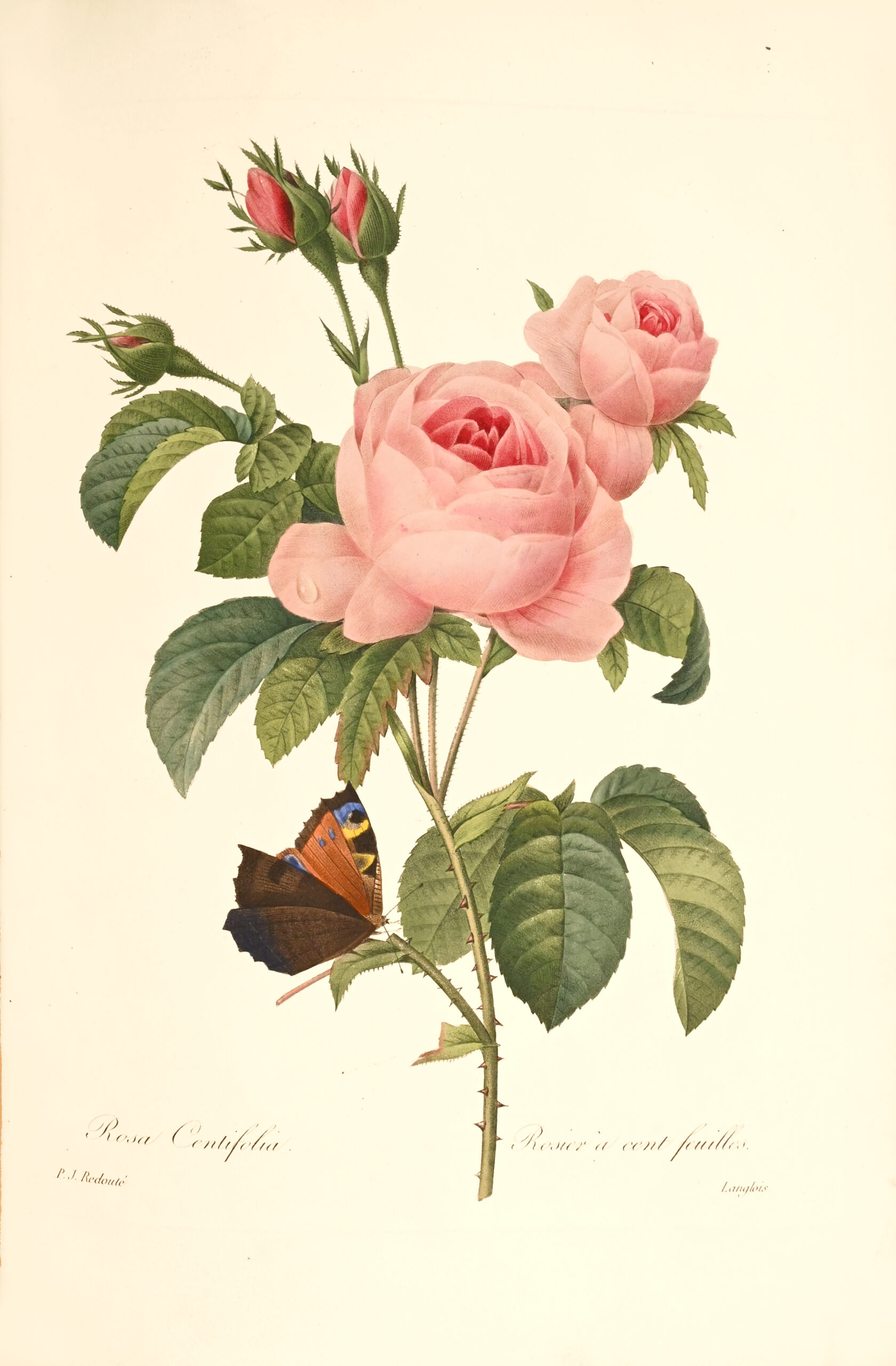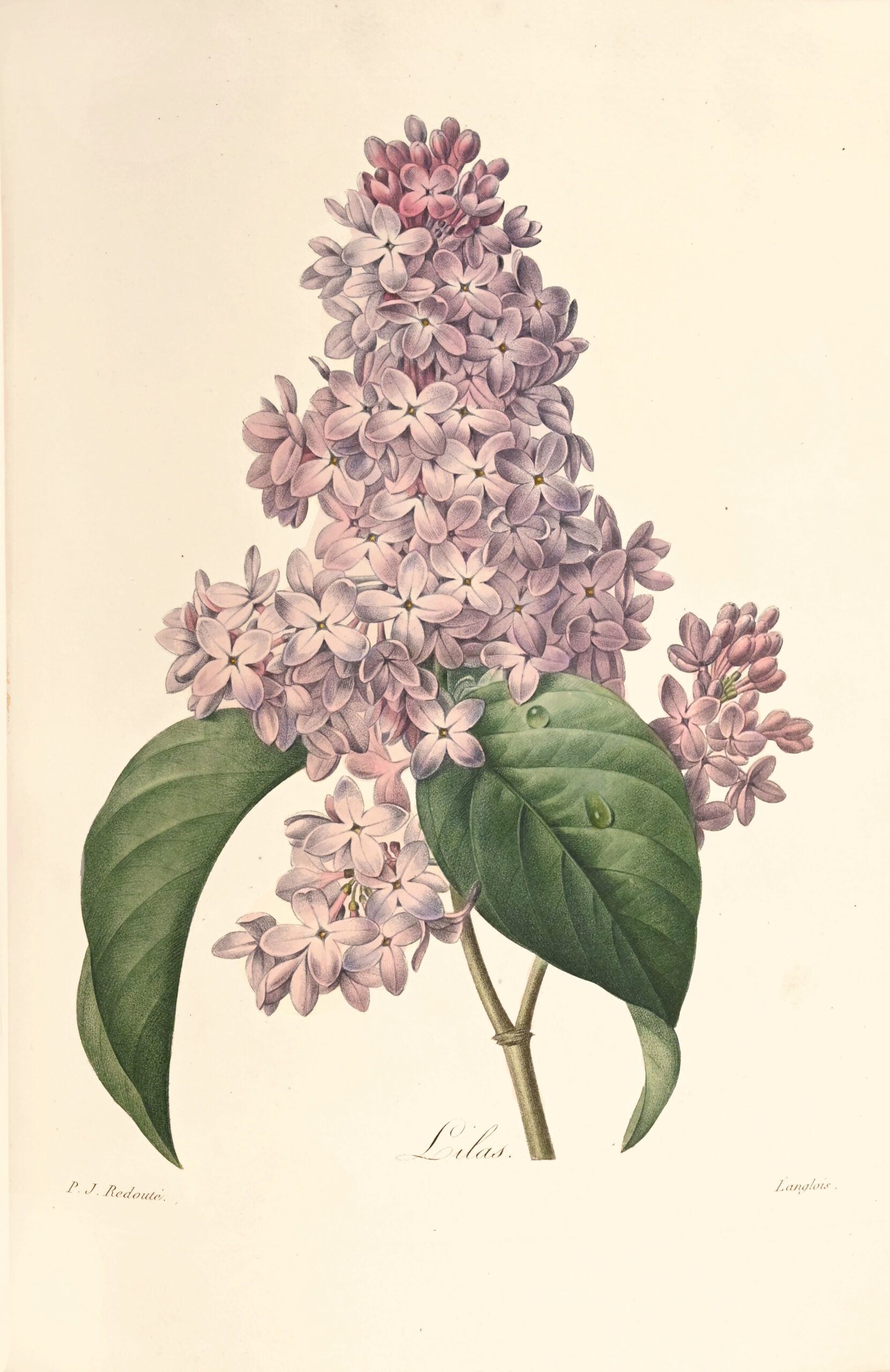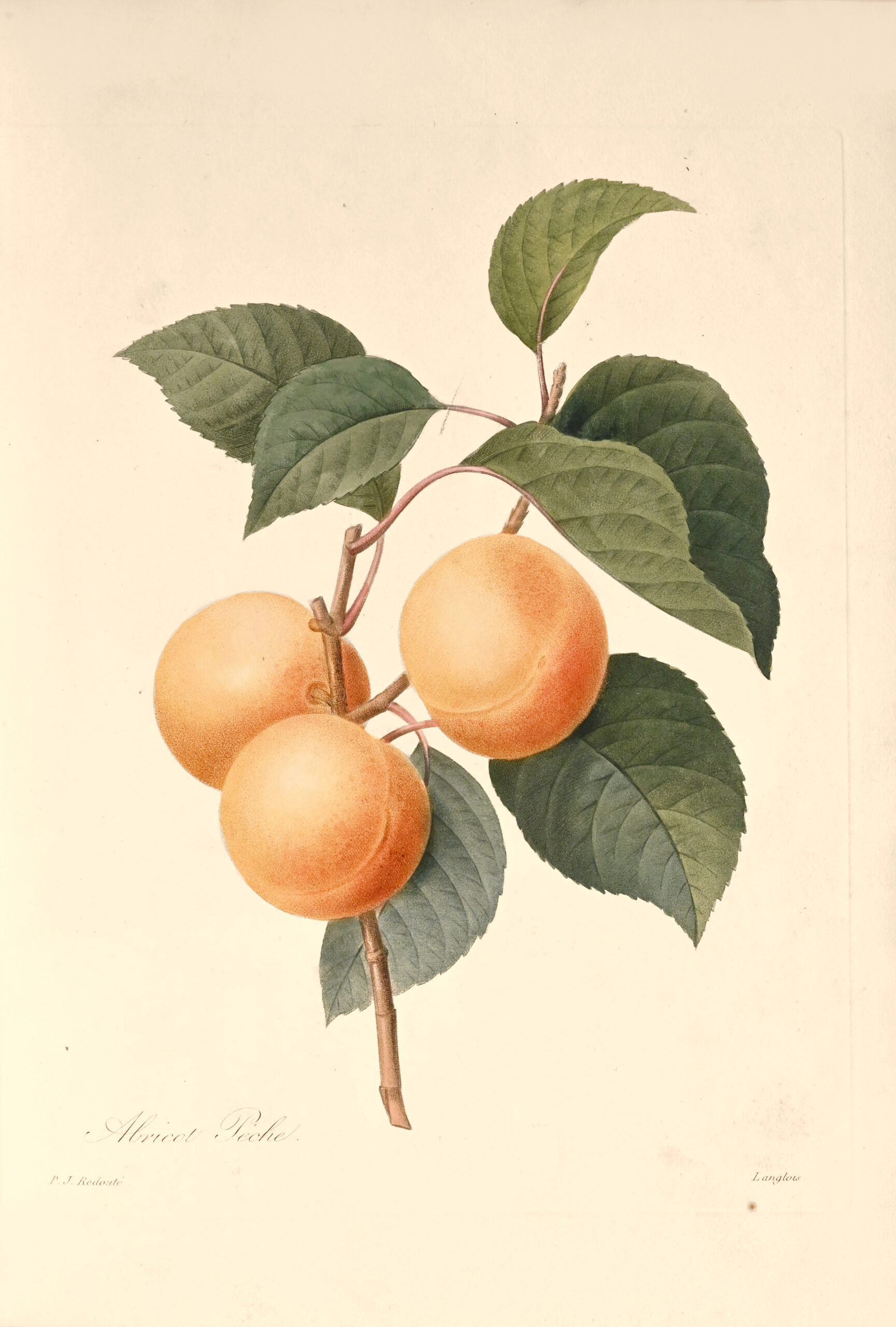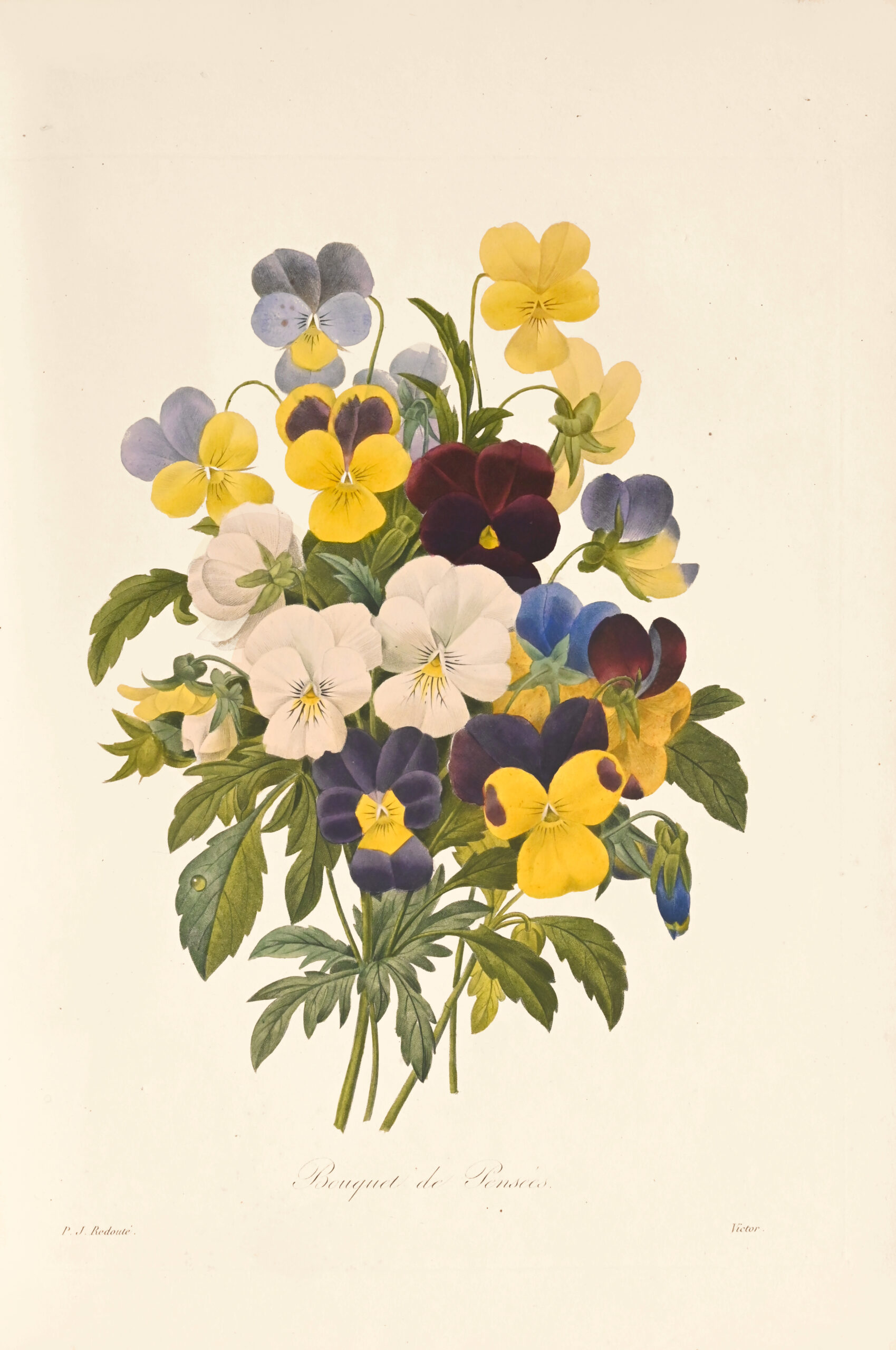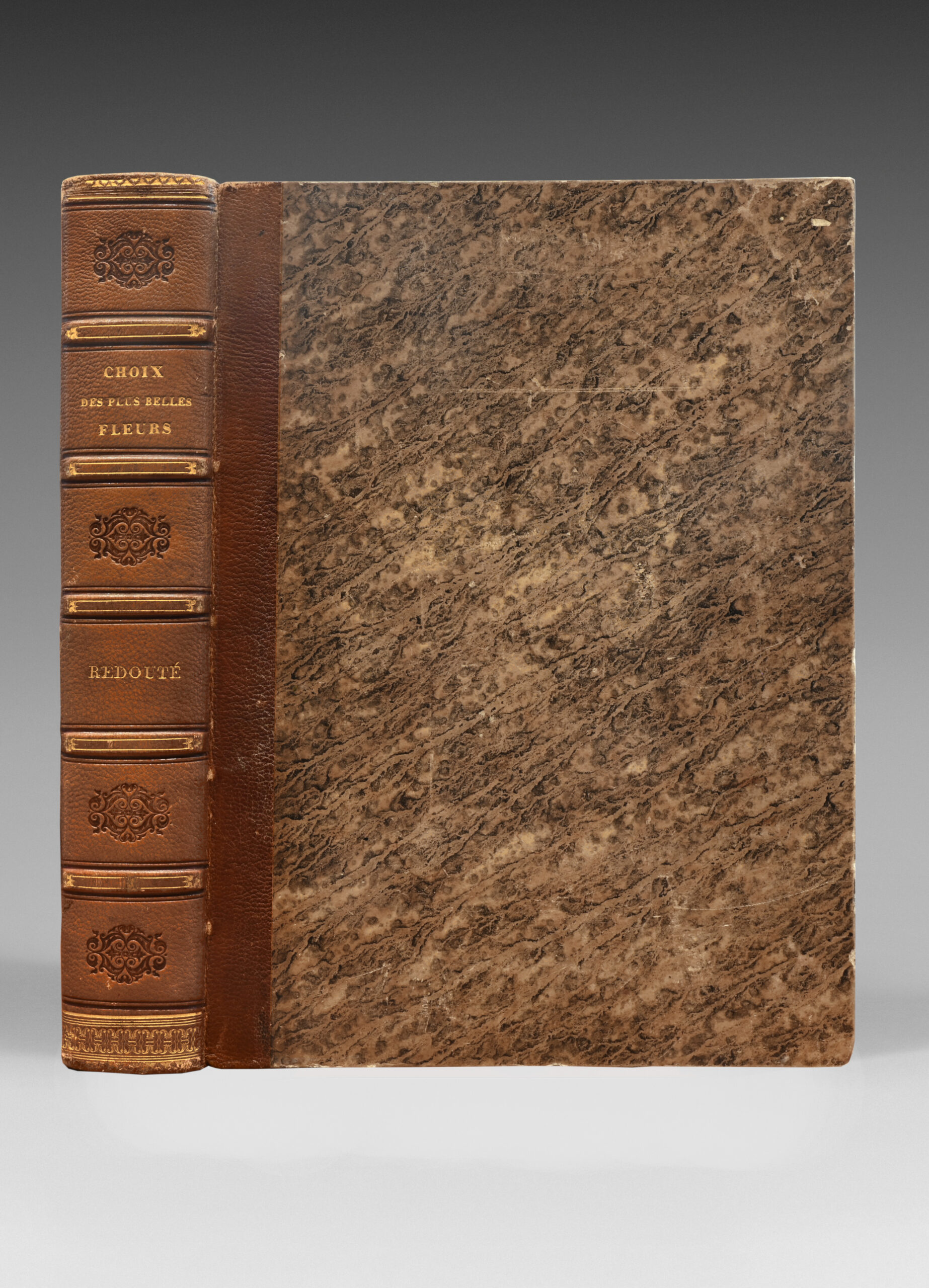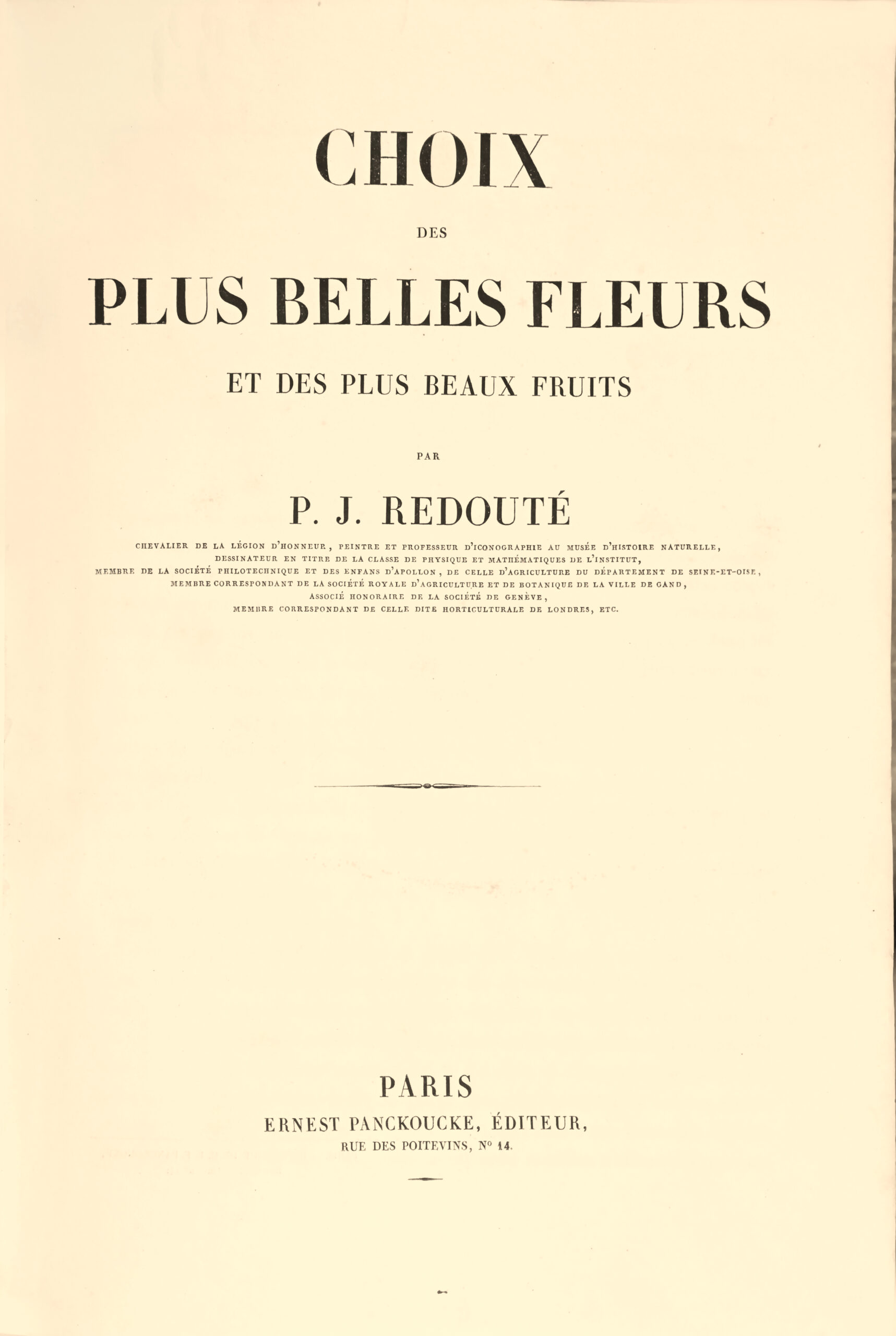Paris, Ernest Panckoucke, n.d. [1827-1833].
Large 4to [334 x 240 mm] of (2) ll., 144 plates, 17 pp. of table. Brown half-shagreen, spine ribbed gilt and blind-stamped, untrimmed edges. Contemporary binding.
This book is the most sumptuous and accomplished of Redouté’s later productions.
While exhibiting his artistic abilities to the full, it shows the license that came to the fore at the end of Redouté’s career as he had to cater to the tastes of the boudoir and drawing room. “The préface to the book is Redouté’s artistic testament. In it, he looks back at his life, reviews his successes, and the role of botanical illustration in his world, observing « The art of painting flowers is certainly not a luxury and the adornment which luxury derives from it cannot detract from the correct opinion that one must have of its utility. Natural history could not exist if deprived from its help, certainly in our age….” (Stafleu).
First edition and first issue.
Superb work extremely rare, containing 144 plates of flowers, bouquets and fruits, stipple-engraved, printed in color and retouched with a brush.
The Choix des plus belles fleurs, published in 36 issues between March 1827 and June 1833, is a selection of the most beautiful original engravings by Redoute.
Pierre Joseph Redouté (1759-1840) “the Raphael of flowers” was appointed by Queen Marie-Antoinette, painter and designer of her cabinet and her private teacher. During the lessons he gave her, Redouté grouped in vases from Japan or Sevres the most beautiful flowers from the greenhouses of Versailles, and under the eyes of the queen, he made in less than an hour a splendid watercolor. He added to his talent as a painter a solid knowledge of horticulture. His iconography is a precious source for the identification of rare flowers, especially the old roses of European gardens.
“The Count of Chambord owned, coming from the Duchess of Berry, five or six of these watercolors which are masterpieces and surpass by far the Van Huysum and Saint-Jean, whatever their perfection.
In 1792, Redouté was appointed draughtsman of the Academy of Sciences, and the same title was confirmed to him at the foundation of the Institute. To the magic of the color and the drawing, he knew how to join a knowledge of naturalist that Van Huysum did not even suspect; these plants, these flowers, of which he made with his palette of delicate wonders, he knew them as well as Linnaeus; the painter in him doubled of a scholar and a deep observer.
Concerned exclusively with his art, he was not involved in politics; he was the teacher of Josephine and after her of Marie-Louise, as he had been of Marie-Antoinette. He also taught his art to the Duchess of Berry, to Queen Marie-Amélie, to Madame Adélaïde, and, apart from the crowned heads and princesses, he had a number of distinguished women as pupils, such as Madame Panckoucke, Mademoiselle Arson, Madame Chantereine.
In 1822, Louis XVIII appointed him professor of plant iconography at the king’s garden, replacing Van Spaendonck. From 1827 to 1833, Redouté completed with happiness and talent an immense work whose title alone indicates its character and value; it is the “Choice of the most beautiful flowers taken from different families of the vegetable kingdom, of some branches of the most beautiful fruits, sometimes grouped and often animated by insects and butterflies”. The enormous success of this publication, whose editions were quickly exhausted, decided the author to publish, as early as 1835, the “Collection de jolies petites fleurs choisies parmi les plus gracieuses productions de ce genre, tant en Europe que dans les autres parties du monde”.
A very nice wide-margined copy preserved in its contemporary binding.
